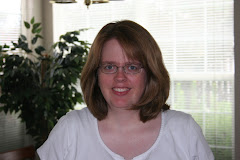Revising Fiction: Making Sense of Writing
- Not all advice fits every time, so adapt as needed
- There are no hard & fast rules in fiction writing
- Edit for one thing at a time in your writing
- Sequence matters
Where to Start (before the 1st draft)
- The World - understand what its like before you write
- Characters - know who they are
- Plot (optional) - try to determine a general plot before you write (doesn't work for writers who are character driven writers rather than plot driven writers
World (must mesh into a coherent hole) - Things to determine about the setup of your world
- Physical characteristics
- Moral codes for the society
- Economic state, money
- Local/world political structure
- Predominant religion
- Magic - how does it work?
- State of science
- Day-to-day life of characters & how it defers from our current world
- If the reader can't by into your world they can't by into your story
- If you’re writing historical fiction, make sure to do research on what life was like in that time period.
Characters
- Characters have to be consistent with your world
- make characters unique so even if the story has been told before it hasn't been told from your character's point of view.
- 3 dimensional characteristics - It's your character's past that brings that character to life for your reader
- At least two unique physical characteristics for each character
- Unique style of speech based on age, education, etc.
- give each character a flaw (your character must have a flaw for your reader to be able to connect with them and the flaw should be introduced early in your story)
- Hero should go through a life altering change in your story
- leverage their flaw to make things more difficult for your character
- make things as difficult as possible for your character
- give each character a special skill that you will see at use during the story (establish early)
- give them a definable personality (what do they get fired up about?)
- How does your character face frustration (typically)
- get angry, resourceful, depressed, get help, pray, etc.
- get angry, resourceful, depressed, get help, pray, etc.
- give identifying line, mannerism, or prop (identify early and bring up frequently)
- give them virtues as well as flaws for the reader to grasp onto and care about (even the villain needs a virtue)
- know how they will change over the course of the story
- make your villain stronger than your hero
- At least two unique physical characteristics for each character
To Avoid Common Pitfalls
- Characters need to be different from one another
- make sure your hero is strong willed
- make your character a doer rather than a watcher (put them in the driver seat)
- remove cliché characteristic traits (i.e. dumb blond, mad scientist, etc.). Instead do what the reader doesn't expect
- don't forget your secondary characters (If a character is not important or doesn't appear frequently then don't give them a name)
Character Profile (check out his book for a detailed example)
- To catch mundane details and keep them consistent throughout the story
- know more about your character than your reader will ever know
Plot
- Some writers start with a plot while others start with a character and find a plot along the way
- Will the plot carry the reader through the story?
- Is your plot any good?
- Every story is generally a three act story - introduction/setup, conflict, resolution
- Inciting Event
- What is providing conflict?
- resolve in a way satisfying to the reader
- make sure your main hero takes the main action to solve the problem
- Cause & effect
- every thing that happens in your book must be a direct reaction to a previous event or person's action (not including a natural event such as an earthquake - which must be established early on in the story that it can feasibly happen in order to raise the stakes)
- every thing that happens in your book must be a direct reaction to a previous event or person's action (not including a natural event such as an earthquake - which must be established early on in the story that it can feasibly happen in order to raise the stakes)
- Character must have a life altering change
Mythic Structure/Heroes Journey (demonstrated proven method)
- Within the three acts of your story there are usually 9 steps that occur over the course of the story
- Step 1: Establish character's ordinary life
- give reason to reader to like your character
- give reason to reader to like your character
- Step 2: Story's starting point/inciting event (usually happens within the first chapter)
- shows this is not an ordinary day for the main character
- shows this is not an ordinary day for the main character
- Step 3: Heading the call (usually happens at the end of Act 1)
- Character should be somewhat reluctant to go on the journey
- Propels story into Act 2
- Character should be somewhat reluctant to go on the journey
- Step 4: Allies & Enemies
- The hero starts to learn the rules of the new "world"/environment he has entered
- Begins to identify who are the hero's allies and enemies (assessing loyalties)
- The hero starts to learn the rules of the new "world"/environment he has entered
- Step 5: Going on the Journey
- Possibly seeing or finding a mentor
- Approaching the Dark moment
- Possibly seeing or finding a mentor
- Step 6: The Dark Moment
- Hero is faced with his most difficult challenge
- Paint your character into a deep, dark, corner
- Crisis doesn't have to be a physical one, a good emotional/ psychological crises works just as well
- Reader must feel like all is lost
- Hero is faced with his most difficult challenge
- Step 7: Return from Dark Moment
- Hero trying to return home with the prize when the villain comes to try and take it away
- Hero trying to return home with the prize when the villain comes to try and take it away
- Step 8: Climax
- Hero faces second life or death struggle
- overcome lingering resentment or flaw
- Hero faces second life or death struggle
- Step 9: Permanence of the Change
- Show the character has permanently changed
- The hardest part of the Mythic Structure is Step 5 & 7, which will take up the majority of the book
- Show the character has permanently changed
Suspense Builders- Make one character a wild card (adversarial)
- Spring surprises (often used at end of chapter, but must be from natural evolution of the plot)
- Mislead the reader
- drop clues that may give the reader the wrong idea, but make sure to play fair and be consistent with the character
- Do your worst
- What is the absolute worst thing you can make happen?
- What is the absolute worst thing you can make happen?
- Take away what is most important to the hero
- Past failure comes back to haunt them
- Turn environment loose on your characters (could be weather, earthquake, or at least something out of the main character's influence), but establish early that such event is possible, but not clearly expected to happen
- Phobias
- make him face the object of his fear
- make him face the object of his fear
- Never make anything easy
- Show danger is real
- Kill a good guy
- Impose a deadline (a.k.a. the ticking clock)
- Prevent hero from running away
- make the need to stay greater than the desire to flee
- make the need to stay greater than the desire to flee
- Make one final twist at end of book
- Stack these suspense techniques on top of each other
Side note: For good practice watch your favorite movie and identify where the mythic structure steps arise and what suspense builder techniques are used.
I will continue on with more of my notes from Kirt's class next week, so please stay tuned.

